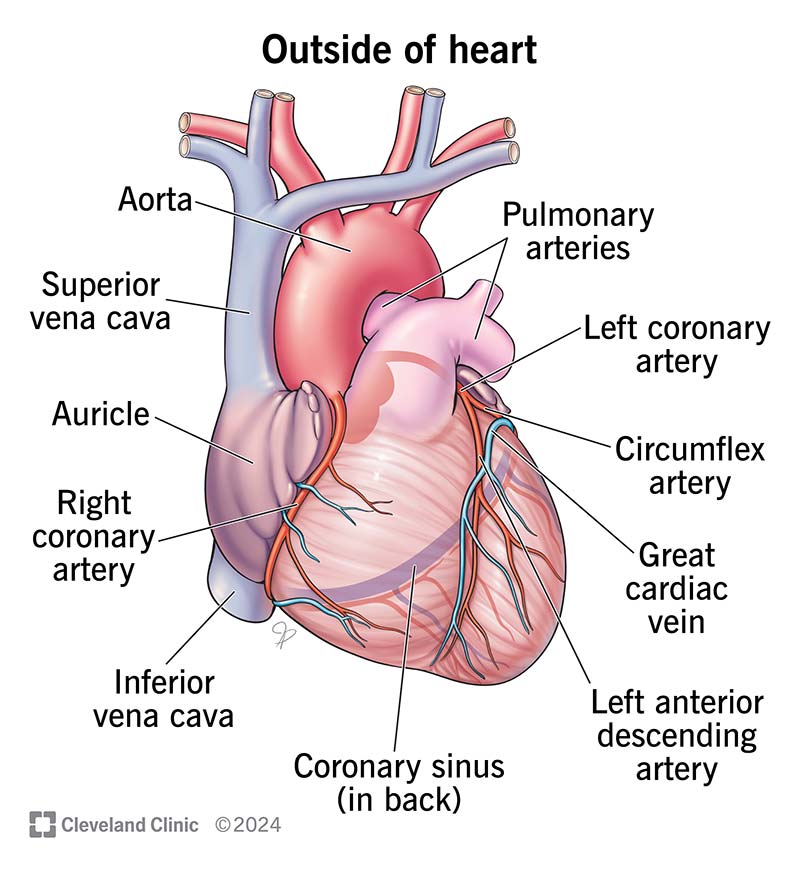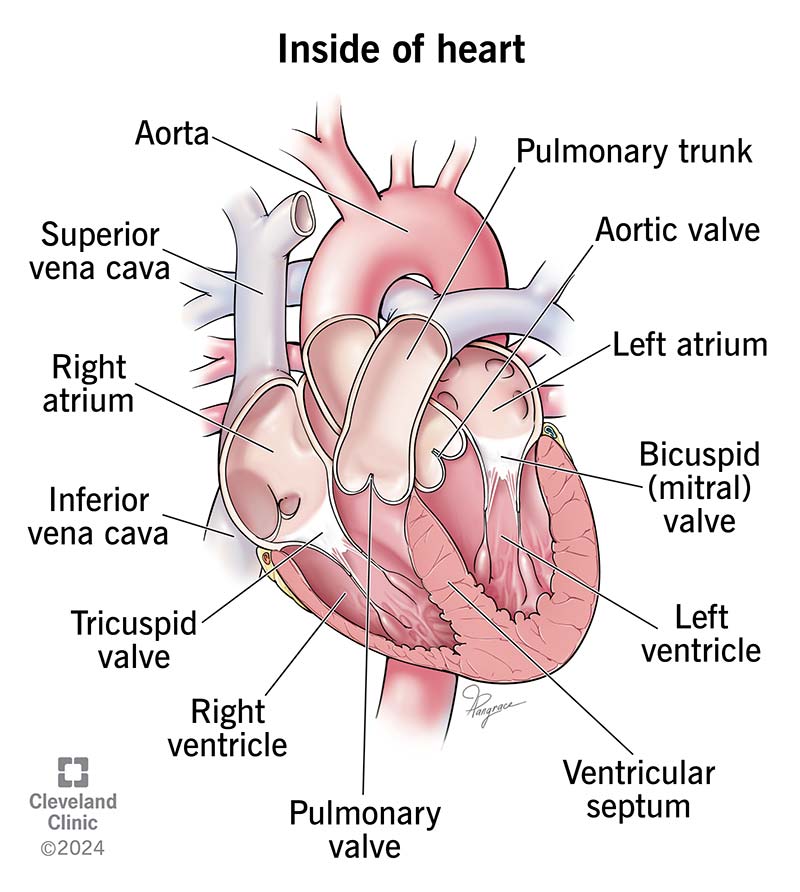Your muscular heart, the main organ in your cardiovascular system, is vital for life. Its parts work together to move blood through your body in a coordinated way. It constantly sends oxygen to your cells and takes away waste. Many conditions can affect this organ and keep it from working well.
Advertisement
Cleveland Clinic is a non-profit academic medical center. Advertising on our site helps support our mission. We do not endorse non-Cleveland Clinic products or services. Policy

The heart is a fist-sized organ that pumps blood throughout your body. It’s your circulatory system’s main organ. Muscle and tissue make up this powerhouse organ.
Advertisement
Cleveland Clinic is a non-profit academic medical center. Advertising on our site helps support our mission. We do not endorse non-Cleveland Clinic products or services. Policy
Your heart contains four muscular sections (chambers) that briefly hold blood before moving it. Electrical impulses make your heart beat, moving blood through these chambers. Your brain and nervous system direct your heart’s function.
Your heart’s main function is to move blood throughout your body. Blood brings oxygen and nutrients to your cells. It also takes away carbon dioxide and other waste so other organs can dispose of them.
Your heart also:
Your heart works with these body systems to control your heart rate and other body functions:

The parts of your heart are like the parts of a building. Your heart anatomy includes:
Advertisement
Your heart walls are the muscles that contract (squeeze) and relax to send blood throughout your body. A layer of muscular tissue called the septum divides your heart walls into the left and right sides.
Your heart walls have three layers:
The epicardium is one layer of your pericardium. The pericardium is a protective sac that covers your entire heart. It produces fluid to lubricate your heart and keep it from rubbing against other organs.
Your heart has four separate chambers. You have two chambers on the top (atrium, plural atria) and two on the bottom (ventricles), one on each side of your heart.
Your heart valves are like doors between your heart chambers. They open and close to allow blood to flow through. They also keep your blood from moving in the wrong direction.
The atrioventricular (AV) valves open between your upper and lower heart chambers. They include:
Semilunar (SL) valves open when blood flows out of your ventricles. They include:
Your heart pumps blood through three types of blood vessels:
Your heart receives nutrients through a network of coronary arteries. These arteries run along your heart’s surface. They serve the heart itself and include the:
Advertisement
Your heart’s conduction system is like the electrical wiring of a building. It controls the rhythm and pace of your heartbeat. Signals start at the top of your heart and move down to the bottom. Your conduction system includes:
Your heart is in the front of your chest. It sits slightly behind and to the left of your sternum (breastbone), which is in the middle of your chest.
Advertisement
Your heart is slightly on the left side of your body. It sits between your right and left lungs. The left lung is slightly smaller to make room for the heart in your left chest. Your rib cage protects your heart.
Your heart looks a little bit like an upside-down pyramid with rounded edges. Large blood vessels go into and out of your heart to bring blood into and away from your heart. They connect your heart to the rest of your body, which it supplies with blood and oxygen.
Everyone’s heart is a slightly different size. Generally, your heart is about the same size as your fist. On average, an adult’s heart weighs about 10 ounces. Your heart may weigh a little more or a little less, depending on your body size and sex.
Heart conditions are among the most common types of disorders. In the United States, heart disease is the leading cause of death.
Common conditions that affect your heart include:
Advertisement
Symptoms of heart conditions include:
Tests to check your heart health include:
Treatments for heart conditions include:
If you have a condition that affects your heart, follow your healthcare provider’s treatment plan. It’s important to take medications at the right times and in the right amounts.
You can also make lifestyle changes to keep your heart healthy. You can strive to:
You may want to ask your healthcare provider:
As the main organ of your circulatory system, your heart keeps you alive. It pumps blood throughout your body, bringing oxygen to your cells and tissues. Since your heart plays such a vital role, it’s important to take care of it. Conditions that affect your heart are very common, but you have the power to make changes for a stronger heart. Ask your healthcare provider how you can improve your heart health.
When your heart needs some help, the cardiology experts at Cleveland Clinic are here for you. We diagnose and treat the full spectrum of cardiovascular diseases.

Last reviewed on 01/26/2024.
Learn more about the Health Library and our editorial process.